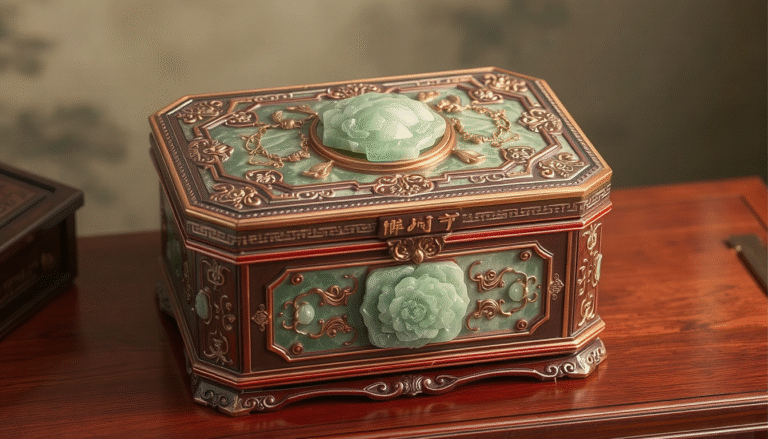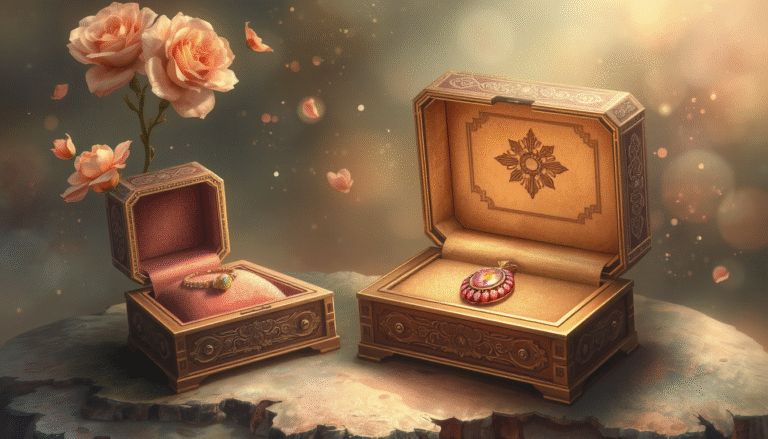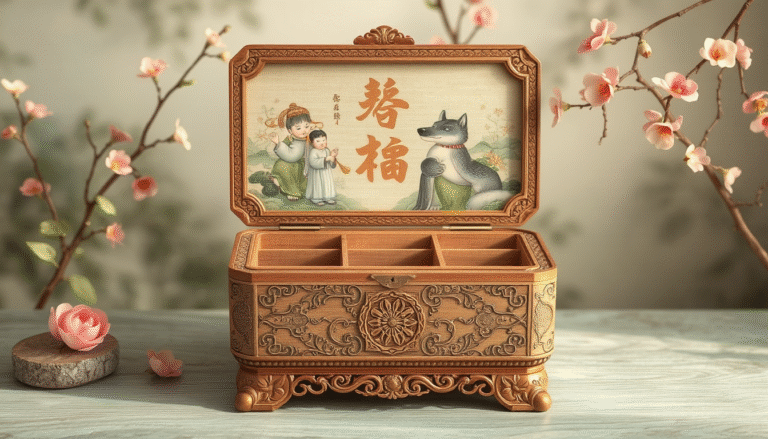Introduction
You’re here because you want to create a functional and beautiful jewelry box. This comprehensive guide will walk you through the entire process, whether you’re a beginner with a craft knife or an experienced woodworker with a full shop. We’ll cover everything from initial planning to final, personalized touches. The guide provides step-by-step instructions for a variety of materials, from simple cardboard to timeless wood. Our goal is to empower you to build more than just a container. You’ll be making a personalized creation that’s either a perfect home for your own treasures or a heartfelt, handmade gift.
Before You Begin: Planning Your Perfect Jewelry Box
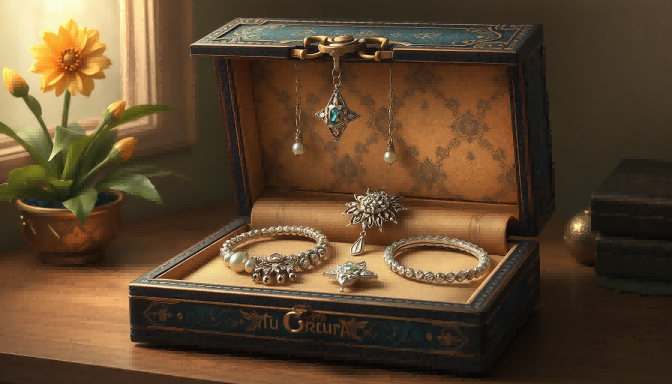
A little planning can save hours of annoyance. Thoughtful design ensures your finished box is not only beautiful, but also perfectly made for the purpose. And this is where we transition from just throwing a box together to making a custom piece that you’re going to absolutely love. We actually made a walnut box without thinking about how long the necklaces were supposed to go, and, you know? Property planning eliminates these frustrations and guarantees that the end result is one that you will be proud of for many years to come.
What Will It Hold? Function Defines Form
The kind of jewelry you are planning to house is the very first most critical factor. But before you start, think about the needs of your particular collection.
-
Rings & Earrings: They need their own storage so that it doesn’t get lost, or scratched. Foam or fabric-covered rolls for rings and small segmented compartments for earrings are ideal.
-
Necklaces: Avoid tangling by giving necklaces vertical space. You can plan for more wiggle room — or add small brass hooks to the underside of the lid, or to the wall of the box itself, to accommodate larger compartments.
-
Bracelets & Watches: Their wider, open spaces are made to accommodate these larger pieces. A removeable top layer adds more space for storing morning & evening skincare products, palettes and accessories, so you can put on and wear your makeup rich touch and semi-sheer.
Sketching Your Design & Dimensions
You don’t have to be an artist. All it takes to bring your idea to life and make your plan clear is a pencil sketch on paper. Begin with the shape first. Just a rectangle? A square? Will it be hinged or fully removing? Once you’ve narrowed down the size requirements, you can start thinking about the size in general. Think about where the box will go — on a dresser, nightstand or on a shelf. Check the dimensions to make sure it will fit exactly where you want it.
Choosing Your Material: Wood vs. Cardboard vs. Other Options
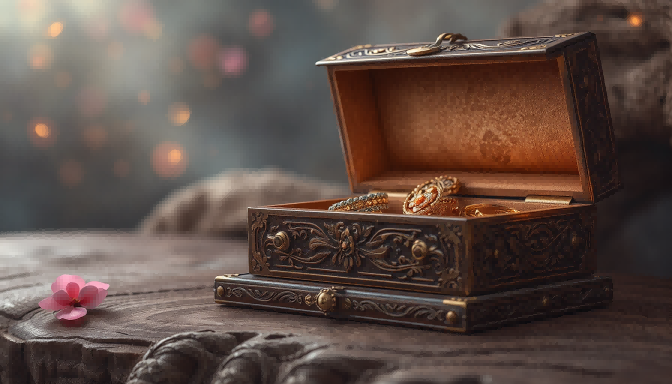
The material you pick out will determine the appearance, texture, and longevity of your jewelry box. It also determines the tools and techniques you need for your project. We’ll explain the options so that you can choose the best for you.
Comparison of Jewelry Box Materials
| Material | Best For (Skill Level) | Required Tools | Cost | Aesthetic |
| Wood | Intermediate to Advanced | Saw, Wood Glue, Clamps, Sandpaper | Moderate to High | Classic, Heirloom, Durable |
| Cardboard | Beginner / Kids’ Craft | Craft Knife, Ruler, Hot Glue Gun | Low | Lightweight, Highly Customizable |
| Acrylic | Intermediate | Scoring Knife, Solvent Cement, Clamps | Moderate | Modern, Sleek, Transparent |
Wood (The Classic Choice)
For a box meant to last a lifetime, wood is the unparalleled choice. Hardwoods like oak, walnut, or cherry offer stunning grain and durability that can’t be matched. Softer woods like pine are more affordable and easier to work with for beginners. Woodworking requires a higher investment in tools and time, but the results are a true piece of craftsmanship. For those ready to start, exploring a resource with various woodworking plans can provide excellent inspiration for different styles.
Cardboard (The Accessible Starter)
Well, never underestimate the potential of some good, old-fashioned cardboard. It’s a great jumping in point for an absolute beginner or a fun afternoon craft project with a few simple tools. A case of good bookboard or several layers of corrugated cardboard, yields some remarkably strong boxes, which you can then cover in lovely paper or cloth to give it that professional touch.
Acrylic & Other Materials (The Modern Alternative)
Acrylic For the super sleek modernist, a clear acrylic option is a fun choice. It is easy to score and snap to size for straight cuts and it can be bonded with a special solvent cement that makes seams disappear. It’s not as forgiving as wood when it comes to errors but provides a unique, modern look and one many people love.
Your Toolkit: Gathering all the Essentials
By having all your supplies and tools on hand before you start, the process is seamless and fun. Here is a list, organized by material type.
For a Simple Cardboard Box
-
Sturdy Cardboard: Bookboard or thick, corrugated cardboard. You want something that won’t bend easily.
-
Craft Knife or X-acto Knife: Nice, clean, exact cuts that will help your box to look professional. In a pinch, you can also slide the top of the bottle off with a box cutter.
-
Metal Ruler: So you can easily guide the knife and cut straight lines? Plastic rulers are vulnerable to damage by knife blades.
-
Cutting Mat:You place this on top of your work surface while you are cutting.
-
Hot Glue Gun or Craft Glue: For the construction of your box that is fast, strong and will keep your box in tact.
-
Decorative Paper or Fabric: For finishing the exterior and interior with a personal touch.
For a Classic Wooden Box
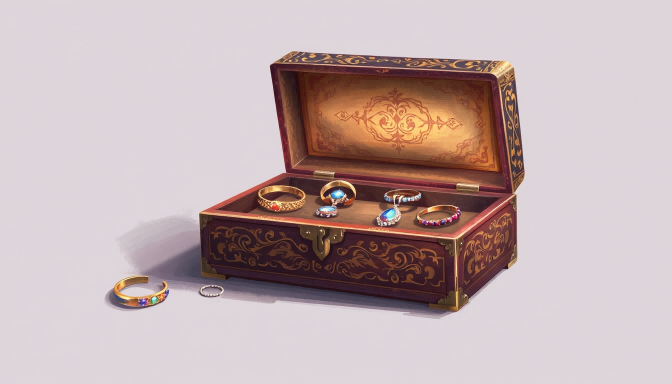
-
Wood of Choice: Pine, poplar, oak, or walnut are all great options depending on your budget and skill level.
-
Tape Measure & Pencil: To mark precisely before you cut anything. Precision matters here.
-
Saw:A miter saw is certainly cleaner for perfect 45-degree cuts in corners, but you can achieve the same results with a hand saw and miter box. A table saw is the most versatile for majority of larger projects.
-
Wood Glue: This is going to be the main glue that holds the box itself together, giving you strong, lasting joints.
-
Clamps: You’ll need these to hold joints firmly together while the glue dries to keep corners exact.
-
Sandpaper: Several grits (commonly 120, 180 and 220) for a silky smooth surface that’s nice to touch.
-
Optional:Drill, screws to strengthen joints, and wood filler for any small gaps that need patching.
For Finishing & Decoration (All Types)
-
Lining Fabric:Velvet, felt, or microsuede for a luxurious interior that keeps your jewelry safe.
-
Adhesive Spray or Fabric Glue: For sewing in the Lining so that there are no wrinkles.
-
Hardware: Small hinges and a latch or clasp to complete the right touch to the box.
-
Finishing:Paint for cardboard boxes; wood stain, oil, or polyurethane varnish for wooden boxes to protect and beautify.
How to Make a Jewelry Box: A Step-by-Step Walkthrough
Now the fun part, construction. We’re going to explain the process for a wooden box, but you can use these same principles of measuring, cutting and assembling to build with cardboard, too.
Step 1: Measure and Cut Your Pieces
Accuracy here is paramount. One of those classic tips we can follow: “Measure twice, cut once.” If you double-check your measurements now, you won’t have a huge headache when stuff doesn’t fit together. Lay out your material with pencil and ruler, using your rough sketch as a guide. You will need six parts: a bottom, a front, a back, two sides and a lid for a box. For a traditional mitered box, you’ll set your saw at 45 degrees and cut the ends of the four wall pieces at a 45-degree angle so that they fit together to make a perfect, seamless corner that looks professional.
Step 2: Assembling the Box Frame
Before applying any glue, we recommend doing a “dry-fit” to check your work. As professionals know, a dry-fit is a crucial step where you temporarily assemble the pieces without adhesive. This allows you to check that everything aligns perfectly before committing with glue. Use masking tape to hold the parts together while you check. Once you’ve confirmed the fit, it’s time for glue. Apply a thin, even layer of wood glue to the mitered edges of your side pieces. Assemble the four walls around the bottom panel carefully. Clamp the corners firmly, using a right-angle clamp or a band clamp to hold everything in place. Check that the box is square by measuring the diagonals—they should be equal if everything is aligned properly.
Step 3: Constructing and Attaching the Lid
The lid of your box can go one of two ways. One of the easiest ways, for beginners, for example, is to make a separate lid, a little bigger than the box frame, which either simply sits on top, or has a shallow inner lip to help keep it in place when closed. In order to have a more polished finish you can actually build the box as a solid piece (sealed from 4 sides) and then with an exacto-knife cut off the “lid” from the “body”. Apologies for not conveying that information sooner in the build) This is usually accomplished on a table saw by raising the blade to the height which the amount of material on the wall thickness will be cut off without cutting into (but the blade will be touching) the interior. This method allows you to cut the lid and body so the wood grain flows from the lid down the body for a seamless, professional appearance. When your lid is finished, use mini hardware hinges for a controlled action of your lid. Mark their location precisely and pre-drill the holes for the screws so the wood doesn’t split when you secure them.
Step 4: Sanding and Finishing
This is also where your project really starts to shine and look finished! Begin sanding with a lower grit sandpaper (e.g. 120-grit) to level the joints and get rid of any dried glue. Progress to finer and finer grits, such as 180-grit and finishing with 220-grit for the smoothest finish. That process closes the pores of the wood and you end up with a silky smooth finish that you can’t help touching. Using a tack cloth, wipe the box after the last sanding, to ensure that it is free of dust when you finish it. So now just take your finish and utilize to safeguard and enrich the wood. A wood stain will color wood while the grain remains visible, naturally. For painted finishes you can use non-toxic floss to protect the wood and give an attractive sheen that shows off the grain and gives a feel of quality..
Elevating Your Creation: Customization and Personal Touches
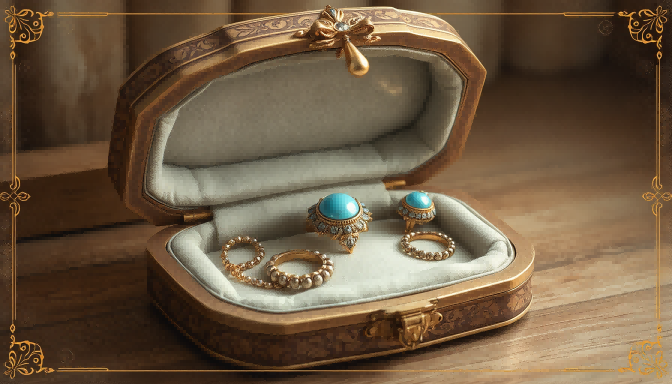
A basic box is functional, but customization transforms it into a personal treasure. This is your opportunity to add features that cater specifically to your needs and style preferences.
Creating a Luxurious Interior
A soft interior looks refined and the lining helps to protect your jewelry from scratches and damage. Velvet and felt are glamorous, easy-to-manipulate options which add luxury to any box. Cut cardboard inserts to fit tightly onto the bottom and on all four walls of the box inside to line the box. For best results, cut fabric about 1 inch larger than your inserts on all sides if you plan to wrap the fabric. Spray cardboard with adhesive, and press it onto the back of the fabric, then tightly wrap the edges around for a clean finish. Then glue the fabric-faced inserts into the box for a professional and clean look that makes a bland interior, well, a bigger interior.
Making dividers and trays even more functional and organized. Make custom sections with thin strips of wood or fabric-covered cardboard that fit your jewelry collection.
-
Ring Rolls:Fashion them by rolling foam tubes in velvet and gluing them side by side inside a section for your rings.
-
Earring Compartments: Create a simple grid with small, interlocking dividers for stud earrings to keep pairs together.
-
Removable Tray: Build a shallow tray that rests on a small lip inside the box, providing a second layer of storage for maximum organization.
Advanced Decorative Techniques
If you are feeling ambitious, there’s no end to the ways you can decorate the outside of your box to make it extra special. Think about personalizing it further with a wood-burning tool, engraved name, initials or a simple design that will make it uniquely theirs. Secure and stretch the ribbon around the lids, then finish with attaching a small brass engraved plaque to each lid for a touch of elegance and a permanent sentiment. While the introduction of inlay, or marquetry, on the lid can turn the box into an art piece and a wonderful gift for a woodworker with a little experience under his or her belt. Add a fan bottom to your jewelry box for an extra special touch. We find this feature fun and exciting and great for giving your creation a little extra oomph, or for storing treasure! Just construct a shallow tray that’s the perfect fit in the bottom, with a minor, inconspicuous knot or notch to allow you to remove it, revealing a secret compartment underneath.
Conclusion: Admire Your Handcrafted Jewelry Box
Congratulations on completing your project! Take a few moments and look at what you’ve built with your hands. You followed more than steps – you plotted, designed, and built something special, something uniquely yours, that we see reflected in the work. This jewellery box is not only for jewellery storage, but also a decorative object. It is functional art, a testament to your ability and a personal possession worth more than anything you could buy from the store. Whether you share it or gift it to someone, we hope you’ve enjoyed the project and it inspires you to further discover the wonderful world of crafts and making things with your hands.
FAQ:
-
What materials are best for making a DIY jewelry box?
Wood is the most durable, and has a classic appeal, while cardboard is ideal for beginners. Acrylic is ideal for intermediate level crafters looking for a modern aesthetic. -
How do I plan the right size and compartments for my jewelry box?
Think about what jewelry you will want to keep there (rings, necklaces, bracelets) and draw a design with compartments and measurements for it before beginning. -
What tools do I need to make a wooden jewelry box?
You will need tools to cut the wood, which can include a saw, wood glue to keep everything together, clamps to hold it in place as your glue dries and measuring tape to keep the boards even. The project will be easier with sandpaper of various grits and finishing materials such as stain, oil and varnish. -
How can I create a luxurious interior for my jewelry box?
Line your box with velvet or felt over cardboard inserts, and design custom compartments, such as ring rolls or removable trays, for organization. -
What are some ways to personalize a handmade jewelry box?
Apply personalized touch with wood burning, brass plaques, inlay work, secret compartments, or custom hardware for a one of a kind masterpiece.


